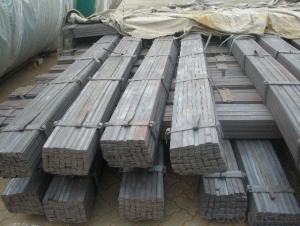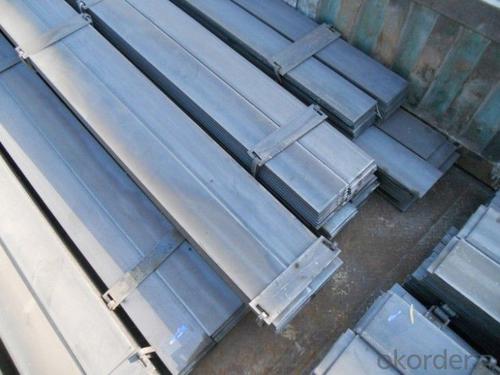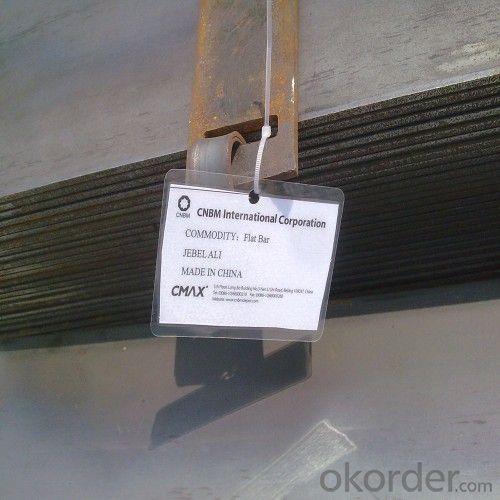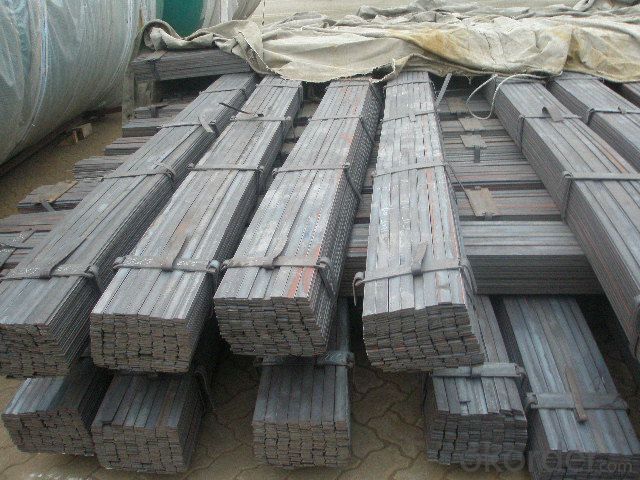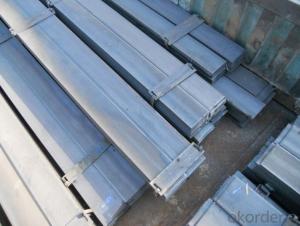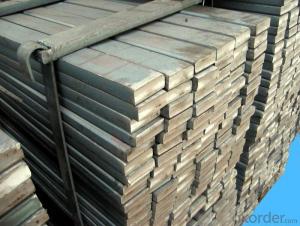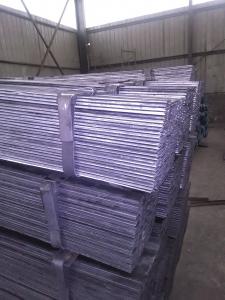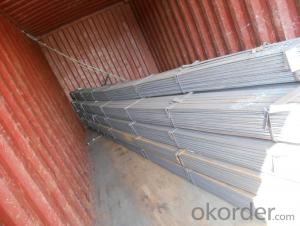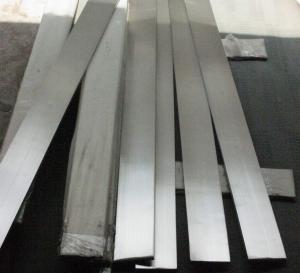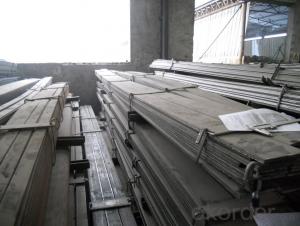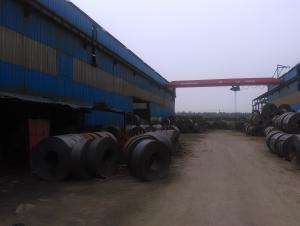Hot Rolled Flat Bars in Material Grade Q235 With Good Price
- Loading Port:
- Tianjin
- Payment Terms:
- TT OR LC
- Min Order Qty:
- 25 m.t.
- Supply Capability:
- 10000 m.t./month
OKorder Service Pledge
OKorder Financial Service
You Might Also Like
Product Description:
OKorder is offering high quality Flat Bar at great prices with worldwide shipping. Our supplier is a world-class manufacturer of steel, with our products utilized the world over. OKorder annually supplies products to European, North American and Asian markets. We provide quotations within 24 hours of receiving an inquiry and guarantee competitive prices.
Product Applications:
Flat Bars are ideal for structural applications and are widely used in the construction of buildings and bridges, and the manufacturing, petrochemical, and transportation industries.
Product Advantages:
OKorder's Flats Bar are durable, strong, and resist corrosion.
Main Product Features:
· Premium quality
· Prompt delivery & seaworthy packing (30 days after receiving deposit)
· Corrosion resistance
· Can be recycled and reused
· Mill test certification
· Professional Service
· Competitive pricing
Product Specifications:
Manufacture: Hot Rolled
Grade: Q195 – 235
Certificates: ISO, SGS, BV, CIQ
Length: 6m – 12m, as per customer request
Packaging: Export packing, nude packing, bundled
Chemical composition of Q235
Alloy No | Grade | Element(%) | ||||
C
| Mn
| S
| P
| Si
| ||
Q235
|
B
|
0.12—0.20 |
0.3—0.7 |
≤0.045 |
≤0.045
|
≤0.3
|
Physical properties of Q235
Alloy No | Grade | Yielding strength point(Mpa) | Tensile strength (Mpa) | Elongation after fracture(%) | ||||||
Thickness (mm) | Thickness (mm) | |||||||||
≤16 | >16--40 | >40--60 | >60--100 | ≤16 | >16--40 | >40--60 | >60--100 | |||
≥ | ≥ | |||||||||
Q235 |
B |
235 |
225 |
215 |
205 |
375--500 |
26 |
25 |
24 |
23 |
FAQ:
Q1: How soon can we receive the product after purchase?
A1: Within three days of placing an order, we will begin production. The specific shipping date is dependent upon international and government factors, but is typically 7 to 10 workdays.
Q2: How do we guarantee the quality of our products?
A2: We have established an advanced quality management system which conducts strict quality tests at every step, from raw materials to the final product. At the same time, we provide extensive follow-up service assurances as required.
Q3: The products are invoicing on theoritical weight or on actual weight?
A3: We can do it in both manners, according to buyers' requiremnet.
Images:
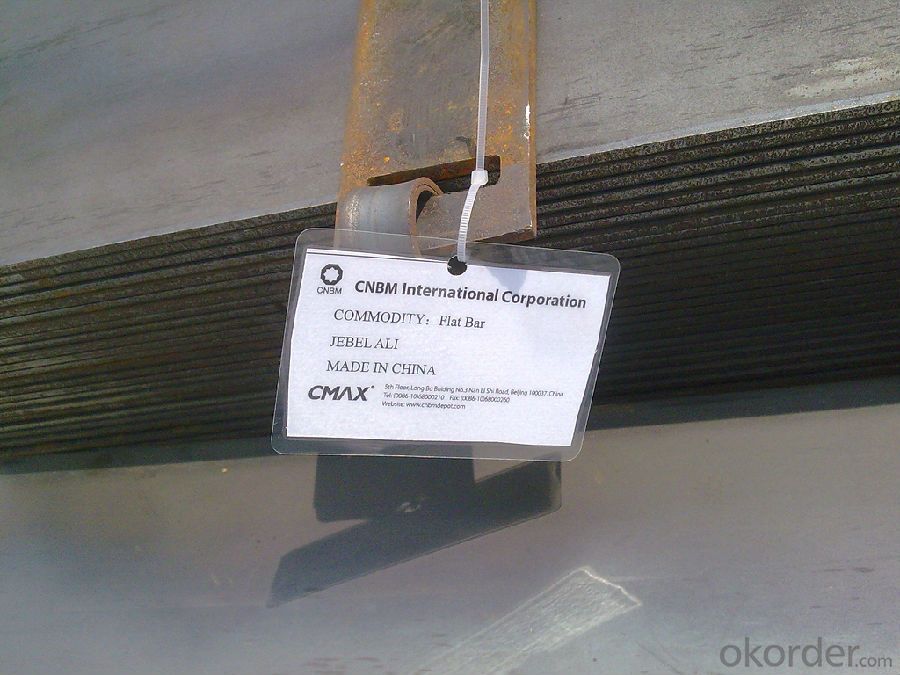
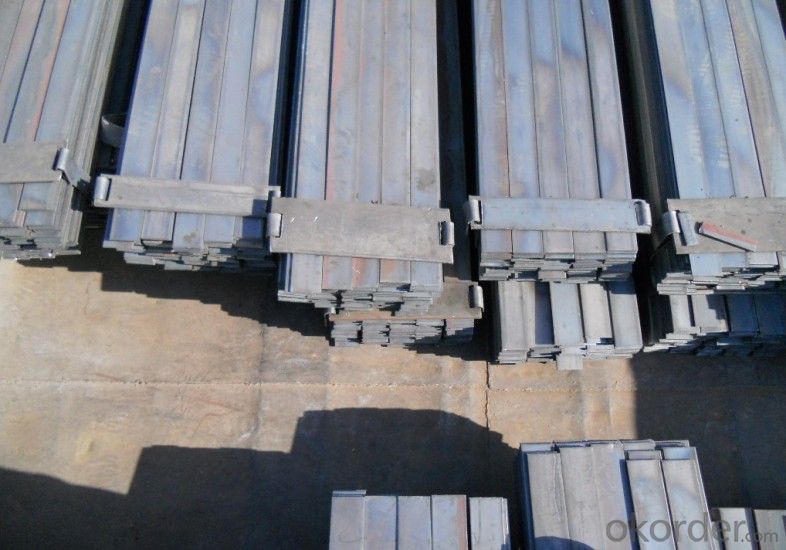
- Q: Can steel flat bars be threaded?
- No, steel flat bars cannot be threaded as they do not have a hollow center like a pipe or a tube, which is necessary for threading.
- Q: Can steel flat bars be used for making cutting tools?
- Steel flat bars can indeed be used for making cutting tools, depending on the specific application and the type of steel used. Steel is a versatile material that can be hardened and tempered to varying degrees, making it suitable for different cutting tasks. However, it is important to choose the right type of steel for the desired cutting tool. High-carbon steels, such as tool steel or carbon steel, are often preferred for making cutting tools as they offer excellent hardness and wear resistance. Additionally, the flat shape of steel bars can be easily shaped and ground into various cutting tool designs, such as chisels or knives. It is crucial to properly heat treat the steel to achieve the desired hardness and toughness, ensuring that the cutting tool performs optimally and maintains its sharpness over time.
- Q: How do steel flat bars perform under fatigue loading conditions?
- Steel flat bars perform well under fatigue loading conditions due to their high strength and durability. Fatigue loading refers to the repeated application of cyclic loads on a material, which can cause cracks and failure over time. Steel flat bars are designed to withstand such loading conditions as they possess excellent fatigue resistance. This is primarily because of their composition, which includes a high carbon content and other alloying elements such as manganese, chromium, and nickel. These elements enhance the material's strength, hardness, and ability to resist deformation and cracking. Additionally, steel flat bars are often heat-treated to further improve their fatigue performance. Heat treatment processes like quenching and tempering increase the material's hardness and toughness, making it more resistant to fatigue failure. Moreover, steel flat bars have a uniform and consistent structure along their length, which helps distribute the cyclic loads evenly. This prevents stress concentrations and reduces the likelihood of crack initiation and propagation. Furthermore, the smooth surface of steel flat bars minimizes stress concentrations and reduces the risk of fatigue failure. The absence of sharp corners or notches eliminates potential stress raisers, ensuring a more uniform distribution of the cyclic loads. In summary, steel flat bars are highly suitable for fatigue loading conditions due to their high strength, durability, uniform structure, and smooth surface. These properties enable them to withstand cyclic loads without experiencing significant deformation or failure, making them a reliable choice for various applications requiring fatigue resistance.
- Q: Can steel flat bars be used for making tools or hardware?
- Yes, steel flat bars can be used for making tools or hardware. Steel is a common material used in the manufacturing of various tools and hardware due to its strength, durability, and versatility. Flat bars can be easily shaped, cut, or welded to create different types of tools or hardware items such as wrenches, chisels, brackets, or supports.
- Q: What is the maximum length of a steel flat bar that can be ordered?
- The maximum length of a steel flat bar that can be ordered depends on various factors such as the supplier, manufacturing capabilities, and transportation limitations. Generally, steel flat bars are available in standard lengths ranging from 6 to 12 feet (1.8 to 3.7 meters). However, some suppliers may offer longer lengths upon request, which can range up to 20 feet (6.1 meters) or even custom lengths based on specific project requirements. It is advisable to consult with the supplier or manufacturer directly to inquire about the maximum length available for ordering.
- Q: Can steel flat bars be used for manufacturing agricultural equipment or machinery?
- Yes, steel flat bars can be used for manufacturing agricultural equipment or machinery. Steel is a strong and durable material that can withstand the heavy loads and harsh conditions often encountered in agricultural settings. Steel flat bars can be shaped, welded, and formed into various components required for agricultural equipment such as plows, cultivators, trailers, and machinery parts. The versatility of steel allows for customization and adaptation to different agricultural applications, making it a reliable choice for manufacturing agricultural equipment and machinery.
- Q: How do you prevent burrs or sharp edges on steel flat bars during cutting?
- One way to prevent burrs or sharp edges on steel flat bars during cutting is to use a high-quality cutting tool or blade with sharp edges. Additionally, using a slower cutting speed and applying consistent pressure can help minimize the formation of burrs. Another effective method is to use cutting lubricants or coolant, which can reduce friction and heat during the cutting process, resulting in smoother edges. Regular maintenance and periodic sharpening of cutting tools are also crucial in preventing burrs and maintaining clean cuts.
- Q: Are steel flat bars prone to warping or twisting?
- Warping or twisting is uncommon in steel flat bars due to their inherent strength and structural integrity. Steel is widely recognized for its reliability in various applications. However, it is worth noting that if steel flat bars are exposed to excessive heat or extreme environmental conditions, they may become susceptible to warping or twisting. To avoid potential deformation, it is recommended to employ proper handling and storage techniques. Furthermore, the resistance of steel flat bars to warping or twisting can be influenced by their quality and manufacturing process. When precision and strict quality control measures are applied, high-quality steel flat bars are unlikely to encounter significant warping or twisting issues.
- Q: How do steel flat bars compare to fiberglass flat bars?
- Steel flat bars and fiberglass flat bars have distinct differences in terms of their composition, properties, and applications. Steel flat bars are made from a solid steel billet that is heated and then passed through a series of rollers to attain the desired shape. They are known for their exceptional strength, durability, and resistance to impact and bending. Steel flat bars can withstand heavy loads and are commonly used in construction, manufacturing, and machinery industries. They are also highly resistant to fire and extreme temperatures. On the other hand, fiberglass flat bars are made from a composite material consisting of glass fibers embedded in a resin matrix. This composition gives them unique properties such as being lightweight, corrosion-resistant, and non-conductive. Fiberglass flat bars are commonly used in industries where electrical conductivity or non-magnetic properties are essential, such as electrical and telecommunications applications. They are also used in marine and automotive industries due to their resistance to water, chemicals, and UV radiation. In terms of strength, steel flat bars generally have a higher tensile strength compared to fiberglass flat bars. Steel is a much denser material and can withstand higher loads and impacts. Fiberglass flat bars, while not as strong as steel, have a high strength-to-weight ratio, making them suitable for applications where weight reduction is important. Another important aspect is cost. Steel flat bars are generally more affordable compared to fiberglass flat bars. Steel is a widely available and widely used material, making it less expensive to produce. Fiberglass, on the other hand, requires specialized manufacturing processes and materials, making it relatively more expensive. Ultimately, the choice between steel and fiberglass flat bars depends on the specific requirements of the application. If strength, durability, and cost-effectiveness are the primary considerations, steel flat bars are the preferred choice. However, if lightweight, non-conductive, and corrosion-resistant properties are essential, fiberglass flat bars are the better option.
- Q: Are steel flat bars available in different thicknesses?
- Yes, steel flat bars are available in various thicknesses ranging from thin to thick, catering to different project requirements and applications.
Send your message to us
Hot Rolled Flat Bars in Material Grade Q235 With Good Price
- Loading Port:
- Tianjin
- Payment Terms:
- TT OR LC
- Min Order Qty:
- 25 m.t.
- Supply Capability:
- 10000 m.t./month
OKorder Service Pledge
OKorder Financial Service
Similar products
Hot products
Hot Searches
Related keywords


